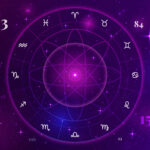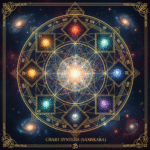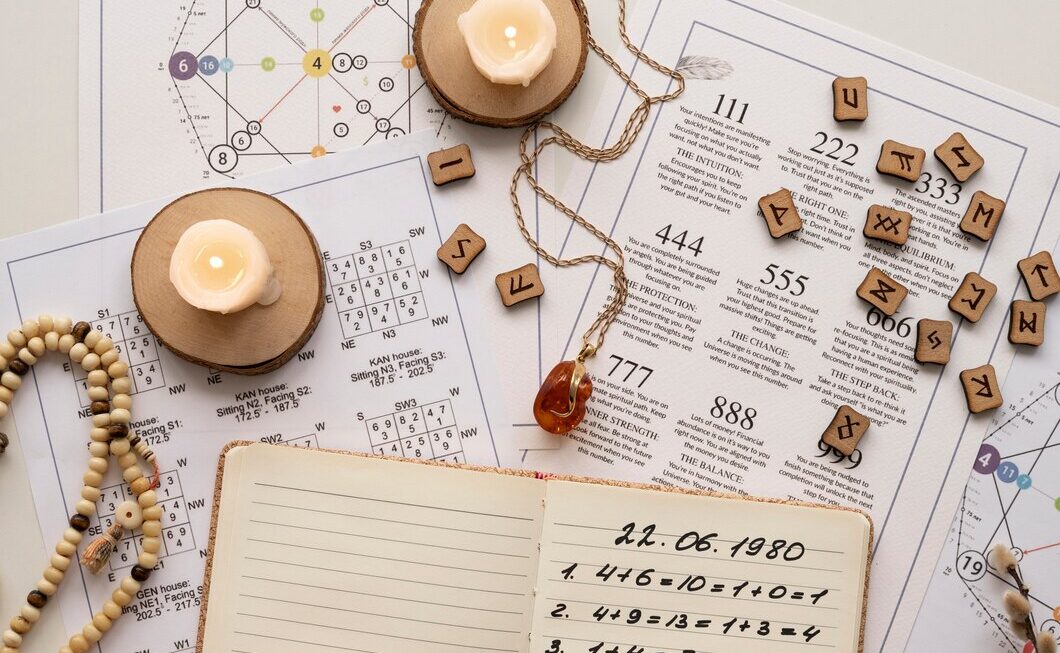In the grand architecture of Vedic compatibility—the renowned kundli matching system known as Ashtakoot Milan—each of the eight factors, or Kootas, plays a specific, weighted role. Most people focus intently on the 8 points of Nadi or the 7 points of Bhakoot. Yet, at the very root of this 36-point system lies the foundational factor, carrying the lightest score of just 1 point: Varna Kuta.
Often confused with the rigid, modern concept of caste compatibility, the original intent of Varna in Jyotish is infinitely more subtle, profound, and relevant to the true spiritual and psychological alignment of a couple. It deals with the fundamental nature or calling of the soul, dictating the shared values, ego dynamics, and the highest path of contribution a couple will follow together.
As a senior content writer specializing in esoteric topics, my goal is to peel back the layers of misconception surrounding Varna Koota, explain its ancient, powerful diagnostic purpose, and demonstrate why this seemingly minimal 1-point factor is, in fact, the essential soil from which all other compatibilities grow.
The True Meaning of Varna: Beyond the Misconception
The term Varna ($\text{वर्ण}$) in Sanskrit primarily translates to ‘colour,’ ‘classification,’ or ‘nature.’ In the context of Vedic philosophy (specifically the Purusha Sukta of the Rigveda), it describes the four spiritual and vocational temperaments that make up a harmonious society. It was originally a classification system based purely on one’s innate qualities (Guna) and chosen action (Karma), not one’s birth lineage.
When analyzing Varna Koota for a couple, the astrologer is not checking a social status; they are checking the compatibility of the couple’s core nature and drive, which is derived from the placement of the Moon in their birth chart.
The Four Varna Classifications in Matching
In the kundli matching system, the 12 Moon signs (Rashis) are mapped to one of the four Varnas, defining the intrinsic nature and ego structure of the individual:
- Brahmin (Spiritual/Intellectual): Associated with teaching, knowledge, spiritual pursuit, and intellectual life.4 Their drive is toward wisdom (Jnana). (Moon signs: Cancer, Scorpio, Pisces).5
- Kshatriya (Action/Executive): Associated with administration, protection, leadership, and power. Their drive is toward service and action (Kriya). (Moon signs: Aries, Leo, Sagittarius).
- Vaishya (Resource/Economic): Associated with commerce, trade, wealth creation, and resource management. Their drive is toward acquisition and sustenance (Artha). (Moon signs: Taurus, Virgo, Capricorn).
- Shudra (Service/Labor): Associated with service, diligence, and manual skills; providing foundational support. Their drive is toward dedication and support (Seva). (Moon signs: Gemini, Libra, Aquarius).
How Varna Compatibility Matching Works (The 1-Point Rule)
The scoring for Varna Koota is straightforward and hierarchical, reflecting a top-down flow of energy:
- 1 Point (Full Match): The woman belongs to the same Varna as the man, or a lower Varna. The classical view held that the woman’s natural energy should be capable of supporting and adapting to the man’s core mission or calling.
- Examples: Brahmin Man/Brahmin Woman, Kshatriya Man/Vaishya Woman, Vaishya Man/Shudra Woman.
- 0 Points (No Match): The woman belongs to a higher Varna than the man. This combination was considered challenging because the individual with the ‘higher’ natural drive (e.g., Brahmin) might find it difficult to fully submit to or align with the spiritual or intellectual calling of the partner with the ‘lower’ Varna (e.g., Vaishya).
- Examples: Vaishya Man/Brahmin Woman, Shudra Man/Kshatriya Woman.
The Crux: This spiritual compatibility analysis is not about superiority. It’s about ego alignment and ensuring the core values and pursuits of the couple flow naturally without friction over who takes the spiritual lead or who holds the highest intellectual authority.
The OREO Analysis: Varna in Modern Relationships
The concept of Varna matching often sparks significant debate, especially concerning modern egalitarian relationships. It is essential to apply a mature, sensitive, and balanced astrological lens to its meaning.
Opinion: Varna Koota is a Test of Shared Purpose, Not Social Class
Opinion: The Varna Koota‘s 1-point contribution to the 36 gunas is a profound indicator of spiritual compatibility and mutual ego-alignment regarding the couple’s life mission, but its scoring mechanism must be interpreted through the lens of modern, equal partnership.
Reason: Hierarchy of Purpose vs. Equality of Status
Reason: The original rishis understood that marital friction arises when two people fundamentally disagree on the purpose of their lives—what they value, what they pursue, and where they seek ultimate fulfillment. The hierarchy in Varna matching does not imply one person is better than the other, but that their core drives are aligned in a supportive manner. If the woman possesses a naturally ‘higher’ intellectual or spiritual drive (Brahmin) than the man (Vaishya), the traditional concern was that she might lose respect for his material focus, or he might feel constantly inadequate in her presence. However, this factor is weak (1 point) precisely because it is purely Moon-based and other, heavier factors (Gana, Bhakoot, Nadi) often override it.
Example: The Conflict of Core Values
Consider a couple with a “zero” Varna match, where the man is Shudra (service-oriented) and the woman is Kshatriya (power/action-oriented). This 0 score doesn’t mean they won’t love each other. It means that, inherently, their core drives are mismatched. The Kshatriya wife may always push for status, leadership, and public recognition, while the Shudra husband is content with diligent, supportive work behind the scenes. The conflict isn’t about love; it’s about persistent, fundamental friction over how the shared family energy and resources should be directed. The Kshatriya may find the Shudra unaspiring, while the Shudra may find the Kshatriya overly aggressive and status-obsessed. The Varna Koota simply warns them that they must deliberately respect and integrate their partner’s contrasting Varna mission.
Restatement: A Flag for Ego-Integration
Therefore, a low Varna Koota score is not a call for concern regarding caste compatibility, but a gentle flag warning the couple that their ego structures and core life missions may naturally pull in different directions. This knowledge allows them to consciously negotiate a shared purpose, proving that compatibility is achieved not by eliminating differences, but by respecting them.
The Spiritual Depth of the 1 Point
Why does Varna Koota carry only 1 point when Nadi carries? Because it represents the spiritual starting line, not the entire race.
The other Kootas—Nadi (Health), Bhakoot (Prosperity), and Gana (Temperament)—are practical issues that affect daily life and family continuity. Varna is more ethereal, dealing with the alignment of the ego and spirit. If the spiritual purpose is aligned (1 point), the couple has a foundation for growth. If it is misaligned (0 points), the foundation is shaky, but it can be reinforced by the remaining 35 points of practical harmony.
Varna and the Power of Shared Dharma
In the Vedic context, marriage is not just a romantic union; it is a spiritual contract for pursuing Dharma (righteous conduct) together. The Varna Koota is the ultimate predictor of their ability to share this Dharma.
- If both partners are aligned in their Varna (or aligned in the supportive way), they naturally motivate each other toward the same higher purpose. A Brahmin couple will constantly seek knowledge and purity together. A Vaishya couple will work seamlessly to build wealth and stability.
- If the Varnas clash, the couple risks pulling each other away from their respective natural callings. The marriage becomes a battlefield where one’s mission is sacrificed for the sake of the other’s comfort.
The 1 point of Varna matching is, thus, a tiny numerical value with monumental spiritual compatibility implications, ensuring the couple’s collective journey is toward a unified, purposeful life.
Practical Application in the Modern Era
For contemporary couples engaging in kundli matching, the true relevance of the Varna Koota lies in communication and respect:
1. Decoding the Conflict of Aspirations
A low Varna score should lead to an honest conversation about individual aspirations:
- The Intellectual vs. The Executive: If one partner is a natural Brahmin (seeking wisdom) and the other is a Kshatriya (seeking power), they must consciously carve out space for both pursuits. The Brahmin must honor the executive’s need for action, and the Kshatriya must honor the intellectual’s need for quiet study.
- The Service-Oriented vs. The Resource Builder: If a Shudra nature marries a Vaishya nature, the service-oriented partner must be respected for their dedication, and the resource-builder must be respected for their focus on material stability. Their primary conflict will be over spending time versus making money.
2. Varna as a Filter for Ego
The 1 point of Varna Koota often serves as a filter for ego. A zero score signals that the ego of one partner may naturally challenge the core essence of the other. The antidote is humility and self-awareness. When a conflict arises, instead of arguing about what to do, the couple must analyze why they are doing it—connecting back to their individual Varna’s primary drive.
3. Transcending the Caste Fallacy
It must be reiterated that the ancient meaning of Varna has nothing to do with the rigid, birth-based Jati (caste) system prevalent in parts of modern society. Astrology is a tool of self-discovery, not a reinforcement of social inequality. The true Varna compatibility matching focuses entirely on the temperamental classification assigned by the Moon’s placement at birth, not the family surname. An individual born into a Brahmin family may possess a Kshatriya or Vaishya Varna temperament, and vice versa.
Conclusion: The Power of the Single Guna
The practice of Gun Milan provides a holistic view of human compatibility, where even the smallest factor carries philosophical weight. The Varna Koota, with its seemingly insignificant point, is a deeply symbolic measure of spiritual compatibility—the foundation of shared purpose and ego harmony.
When engaged in kundli matching system analysis, remember that the score is a composite of 36 vital factors. A perfect score is impossible, and an imperfect score is an opportunity. Use the low score of Varna Koota not as a reason to abandon love, but as the first profound piece of wisdom: A gentle reminder that your deepest differences lie in your core values and aspirations. By understanding this single, spiritual guna, you possess the insight necessary to elevate your love above the friction of conflicting egos, transforming potential division into purposeful devotion.











